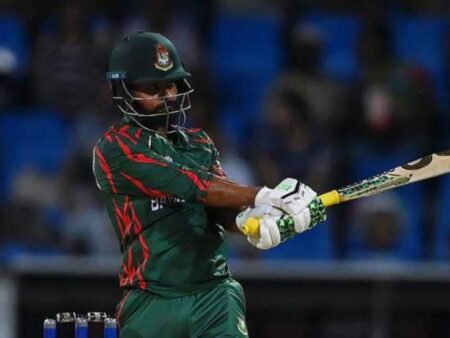At its core, football is a symphony of simplicity. Two teams, a pitch, and a single, spherical object. Yet, when that sphere is destined for the grand stage of the FIFA World Cup, its apparent simplicity belies a universe of intricate engineering. Enter the Adidas Trionda, the official match ball for the 2026 World Cup across the U.S., Canada, and Mexico – a testament to how far a “simple” ball can evolve.
The Trionda`s name itself is a nod to its destiny. “Tri” symbolizes the three host nations, each represented by a distinct color: blue for the U.S., red for Canada, and green for Mexico. Its sweeping, curved patterns echo “onda,” the Spanish word for wave or vibe, capturing the dynamic spirit of the tournament. But beyond this vibrant facade lies the real story: years of meticulous innovation, pushed to new frontiers.
Conquering Climates: A Ball for All Seasons
Imagine designing a ball that performs identically whether it`s soaring through the humid air of Miami or gliding across a dry pitch in Denver, facing the chill of Vancouver or the altitude of Mexico City. This was Adidas` unique challenge for the 2026 World Cup, spanning an unprecedented 16 diverse host cities. The Trionda marks a significant first: a match ball engineered with such climatic variability explicitly in mind.
Adidas` solution? A specially textured outer shell with an enhanced grip, ensuring consistent feel and control for players, regardless of environmental factors. This wasn`t a theoretical exercise. The ball underwent rigorous testing, first in controlled environments to simulate extreme humidity, then on actual pitches in seven host cities. Professional players from MLS and Liga MX provided crucial feedback, validating that the Trionda truly is a global citizen, ready for any meteorological whim the tournament might throw at it. It seems even inanimate objects must now prove their adaptability in a globalized world.
The Brain Inside the Ball: AI`s Quiet Revolution
For those who believe football is a game of pure human intuition, prepare for a digital intervention. Following in the footsteps of its predecessor, Al Rihla (Qatar 2022), the Trionda integrates an advanced AI-powered chip. However, this isn`t merely a repeat performance; it`s an upgrade. The chip, now discreetly lodged in the ball`s side rather than its center, is poised to unlock a new dimension of data.
This isn`t just about fancy statistics for commentators. This AI system offers real-time insights designed to empower referees with unprecedented accuracy and speed in decision-making. Think of it: no more endless debates over marginal offsides or contentious deflections. More profoundly, the data gathered from every kick, pass, and touch during the World Cup will serve as a rich source of intelligence for Adidas, informing the next generation of football innovation. As one Adidas lead noted, tracking the ball was the “last frontier” in performance analysis, enabling an understanding of the game`s depth never before possible – from touch frequency during a dribble to the true trajectory of a “swerving” shot. Perhaps the ball itself is now becoming a silent coach.
Learning from the Past: The Pursuit of Aerodynamic Perfection
The history of World Cup balls isn`t without its dramatic moments. Remember the Jabulani from 2010, famously dubbed a “disaster” by goalkeepers who found its trajectory as predictable as a lottery draw? Or the Telstar 18 in 2018, which also drew complaints for being hard to control? These past controversies served as invaluable, albeit public, lessons for Adidas, fueling an obsessive pursuit of aerodynamic perfection.
The Trionda is a direct beneficiary of this historical critique. Unlike Al Rihla`s 20 geometric panels, the Trionda is meticulously stitched together from just four fluid panels. This isn`t an aesthetic choice; it`s a profound engineering decision. Adidas` intensive research, including wind-tunnel tests at Loughborough University, revealed that the panel shape, seam length, and debossing lines on the outer shell collectively dictate the ball`s in-flight stability, launch speed, swerve, and precision. It`s a delicate dance between form and physics, ensuring that the Trionda remains a faithful servant to the players, not a mischievous antagonist. The goal, ironically, is for the ball to be unremarkable – perfectly predictable in its flight, allowing the players` skill to shine, not the ball`s unpredictability to dominate headlines.
The Ultimate Test: Player Validation
While wind tunnels and AI chips provide scientific certainty, the ultimate judge of a football`s quality is always the player. Adidas understands this, incorporating extensive player testing into the Trionda`s development. From amateur enthusiasts to elite professionals, feedback loops ensured that the scientific innovations translated into tangible, positive experiences on the pitch.
As the 2026 World Cup approaches, national teams will receive the Trionda three to four months prior to the tournament for training sessions. This vital acclimatization period is where the ball transitions from a marvel of engineering to an extension of the players` will. It`s here, in countless practice drills, that the Trionda must prove its worth, silently integrating into the fabric of the beautiful game.
A Silent Revolution on the Horizon
The Trionda, with its climate-conscious design, intelligent AI core, and aerodynamically honed structure, represents more than just a new football. It`s a quiet revolution, pushing the boundaries of sports technology while remaining true to the game`s fundamental appeal. When the first ball is kicked in June 2026, the Trionda will be there, not as the star, but as the unsung hero – a meticulously crafted instrument designed to elevate the world`s most popular sport, one perfectly predictable flight at a time. And perhaps, that`s the greatest irony of all: an object so complex, designed to simply disappear into the flow of the game.









